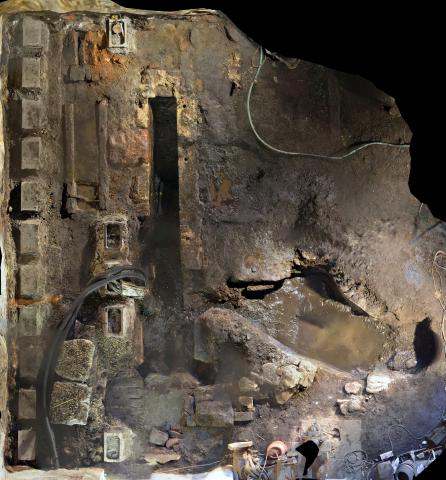Výsledky a zhodnocení stavební obnovy vodního hamru Dobřív na Podbrdsku

Příspěvek se věnuje stavební obnově areálu vodního hamru v obci Dobřív na Podbrdsku, která započala v červnu roku 2017. Plně funkční technická památka byla ve zkušebním provozu otevřena 9. června roku 2020, slavnostně pak za přítomnosti odborné i široké veřejnosti 5. září roku 2020. Opravy stály správce objektu, Západočeské muzeum v Plzni, více než 15,5 milionu korun českých, přičemž na financování se podílela Evropská unie prostřednictvím Ministerstva pro místní rozvoj ČR a Plzeňský kraj. V průběhu rekonstrukce se podařilo zrestaurovat všechny stroje a veškeré vybavení pocházející z 19. století, například dřevěné skříňové dmychadlo poháněné novým vodním kolem pro vyhřívací pec a historické dynamo poháněné transmisí, revize se dočkal také nadhazovací buchar, důmyslně konstruovaná stojanová vrtačka, excentrické nůžky na stříhání silných plátů železa /pákové nůžky s levým a pravým břitem/ a brusky. Národní kulturní památka, jejíž původ sahá do 16. století, prošla důkladnou rekonstrukcí, která trvala bezmála tři roky. Obnova se týkala také tří vodních kol, která pohání voda přiváděná vantroky. Hamr získal čtvrté vodní kolo sloužící pro provoz dmychadla. Stavebně-historický průzkum areálu vodního hamru byl díky obnově doplněn o nález pozůstatků vysoké pece, dlouhý odvodňovací kanál a řadu dalších nálezových situací.
Results and evaluation of the structural restoration of the Dobřív hammer mill in the Podbrdy region
The paper is devoted to the structural restoration of the water wheels powered iron hammermill in the village of Dobřív in the Podbrdy region, which began in June 2017. The fully functional technical monument was opened in trial operation on 9 June 2020, and inaugurated in the presence of experts and the general public on 5 September 2020. The repairs cost the administrator of the building, the West Bohemian Museum in Pilsen, more than 15.5 million Czech crowns, with funding from the European Union through the Ministry
for Regional Development of the Czech Republic and the Pilsen Region. In the course of the reconstruction, all the machines and equipment dating back to the 19th century were restored, e.g. a wooden box blower driven by a new water wheel for the heating furnace and a historic dynamo driven by transmissions; the pitching hammer, an ingeniously constructed stand drill, eccentric shears for cutting thick iron sheets / lever shears with left and right blades/ and grinders were also revised. The national cultural monument, whose origins date back to the 16th century, underwent a thorough reconstruction that took almost three years. The restoration also included the three water wheels, which are powered by water supplied by the vantrocks. The mill has acquired a fourth water wheel used to operate the blower. Thanks to the restoration, the structural and historical survey of the hammer mill area was supplemented by the discovery of the remains of a blast furnace, a long drainage channel and a number of other findings.
